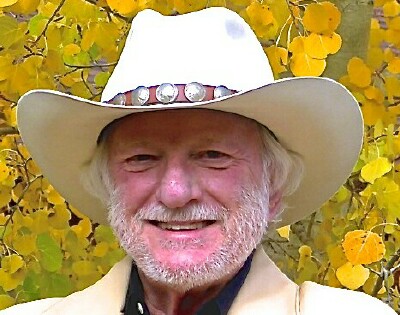The Revolutionary Evolution of the Media -- Chapter 3

Chapter 3 -- The Sacred Part of Media’s Evolution
To understand media … yesterday’s, today’s and tomorrow's … let’s start with God. Or, more properly, gods. Time and again, religion has helped drive media to new levels and that's just as true today as it was back in that first-grunt era. From one-to-one verbal communications right through to today’s burgeoning connectivity, the history of religious exercise is a history of content aimed at believers … proselytizing or reaffirming. As the first of the “4-Cs,” content creates the palate. Don’t think that matters as much today? It does in the US.. (Think mega-churches … or, for that matter, Fox News.) As a friend of mine named Scott Gentry tweeted once, “Content will always be King, Queen, and Jester. Use it wisely.”
Starting at the beginning with the oldest writing, found in Mesopotamia near Uruk (modern day As-Samawah, Iraq, but a major Sumerian city circa 3500 BC), included cuneiform tablets that have allowed scholars to track religious thought from early Sumer through Persian and Greek conquerors up to Biblical times. Enuma Elish (When on High …), an epic poem, describes the creation of heaven and earth to the hero Marduk. The Sumerians also invented the modern calendar; theirs had 12 months with months alternating between 29 and 30 days. In Mesoamerica the Maya had two separate years, a 260-day Sacred Round and a 365-day Vague Year. The calendars were etched onto clay tablets or carved in stone.
A great deal of early religious stories, tales, songs, poems and epics revolved around death. Among the first books was The Book of the Dead in the papyrus of Nu, Egypt. The “book” highlights spells to enable the deceased to have a comfortable afterlife. Much remains of Egyptian religious rituals including two versions of daily temple rituals. Papyrus scrolls showed up around 600 BC. Egypt’s religions spanned from about 4000 BC to the Sixth Century AD (or CE) when the last temple of the goddess Isis was shuttered on the island of Philae.
Ishtar was more than the name of a bad movie; it was one of the names of the Mother of Gods in ancient Greece that even pre-dated the arrival of the Hellenes. That tribe, which came from the north, brought us philosophical academies, staged tragedies and comedies and the idea of citizen participation. The Phoenician alphabet emerged around 2000 BC.
In looking back from ancient Rome, the Etruscans dominated most of the BC eras on the Italian peninsula before the sophisticated city-state of Rome itself emerged. From the Etruscans, one of the first books of anatomy grew out of their hepatoscopy – the study of the liver. Seems they were superstitious about the liver as a look into the body’s soul … so they sacrificed some victims to examine the livers. There is a bronze liver from Piacenza that is divided into 40 regions, each named for a god.
Roman gods often followed the Greek hierarchies with new names and, in many cases, somewhat different attributes. Among early books, those by Greek sibyls (female Greek oracles) formed significant parts of Roman religions. A convoluted tale (click here for Wikipedia’s take on the stories) resulted in one of the last kings of Rome acquiring the so-called Sibylline Books, which the Romans took as valuable prophecies. It seemed to work, Augustus decided to, at least in Egypt with Cleopatra (Isis), be divine like Alexander. They, Augustus and Cleopatra, named their kids the Sun and the Moon.
It wasn’t long before Roman emperors were all divine; though not all demanded to be worshiped as Caligula and Nero did.
In Persia (now Iran), a country surrounded by mountains (big ones) not much is known before the Aryan invasion around 1000 BC bringing Indian and Asian influences. A little earlier than 600 BC, a preacher arose in what is now northeastern Iran … but his teachings and hymns met with hostility until a regional ruler named Vishtaspa became a disciple of Zarathustra – usually called by the Greek version of his name, Zoroaster. His 17 hymns known as The Gatha along with, later about the 5th century AD or CE, the Avesta.
From the Indian subcontinent came the Hindu religion … something difficult to describe as it is often defined by what it isn’t. An old Indian saying might be relevant to it’s understanding: “The problem of death is the beginning of philosophy.” Sometime between 1500 and 1200 BC, some Aryan tribes from the North invaded what is now Punjab and wrote hymns … the Rig Veda. “ … it is the oldest work of literature in an Indo-European language, it is the oldest living religious literature of the world.” It “consists of 1,028 hymns to the vedic dieties.”
The Hindu calendar worked a bit differently. Like we count our individual ages from birth, the Hindu calendar counts from when one god went back to heaven … or about 5116 years ago.
India also fostered the cult of Buddha. Speaking largely in dialogues, parables, anecdotes, similes and stories, Buddha spoke to popular audiences. Many things were written as summaries of his teachings or in lists to help listeners remember.
China is a case unto itself with its own unique languages and a writing methodology based on ideographic scripts. Chinese indigenous religions aren’t so much religions as teachings (although Taoists, in a later reaction to Buddhism, embraced priests). Chinese recorded history begins with the Shang dynasty, which ruled from the 16th to the 11th centuries BC. Dating to the Chou dynasty around 770 BC, the Book of Songs is one of the earliest Chinese collections of hymns. Confucius later called them the “documents of antiquity” and based a number of his teachings on them. Just before Confucius life, the Chou dynasty devolved from a somewhat centralized empire into a collection of feudal city-states whose princes based their lineages on local cult-heroes of the past.
From the 6th through the 3rd centuries in China came the Age of Philosophy. That brought – or resulted from – the formation of merchant classes, the minting of coins, inter-regional commerce and political unrest. Confucius used the earlier Book of Songs and the Book of Documents attempting to reawaken the Chinese to an earlier tradition. Formatting it all in a quasi-religious sense, he created an ethical and moral system from writings that were “auguristic, dominated by magic and amoral.” His teachings took China from concern “with good and bad luck to a concern with right and wrong.” You can read his 20 books called the Analects to find out what that means. It is worth noting that Confucianism is an activist and worldly philosophy, which metamorphosed into a state religion.
Taoism, on the other hand, spoke of the “other-worldly.” Tao means the way. The Chuang Tzuand theLieh Tzu are the earliest surviving works of the Taoist Canon of mysticism and are attributed to the, probably mythical, Lao Tzu.
Paper, by the way, was introduced in China in 105 AD.
As the first “people of the Book” (the Torah originally), the Jewish people created a religion and a history unlike any other before. The dependence upon one divine revelation coupled with a dependence upon that revelation as opposed to looking upon a panoply of gods – all lower case.
The Hebrew Bible, a collection of books, was written across a thousand years or so culminating in canonization around the end of the 1st century AD. The Bible consists of the Torah, the Prophets and the Writings.
The developments of all these peculiar contents around the world in the eras before the common era (BCE, or BC) and how they were distributed revolved around tribal manners of communications.
After the commencement of the common era, the decline of Rome and the Dark Ages, the next steps in media presaged the Industrial Revolution and more – and faster – changes.
Next week: Chapter 4: In Print
In an almost 50-year career writing and reporting on media, Paul S. Maxwell started and/or ran some 45-plus publications ranging from CATV Newsweekly to Colorado Magazine to CableVision to Multichannel News to CableFAX and The BRIDGE Suite of daily newsletters and research publications. In between publishing stints, Maxwell served as an advisor and/or consultant to a number of major media companies and media start-ups including running a unit of MCI and managing a partnership of TCI and McGraw-Hill.
Send any and all criticisms, suggestions, rants, threats, corrections, etc. to him at: cablemax@mac.com. He has a new Web site coming soon!Check us out on Facebook at MediaBizBloggers.com
Follow our Twitter updates at @MediaBizBlogger
The opinions and points of view expressed in this commentary are exclusively the views of the author and do not necessarily represent the views of MediaBizBloggers.com management or associated bloggers. MediaBizBloggers is an open thought leadership platform and readers may share their comments and opinions in response to all commentaries.


